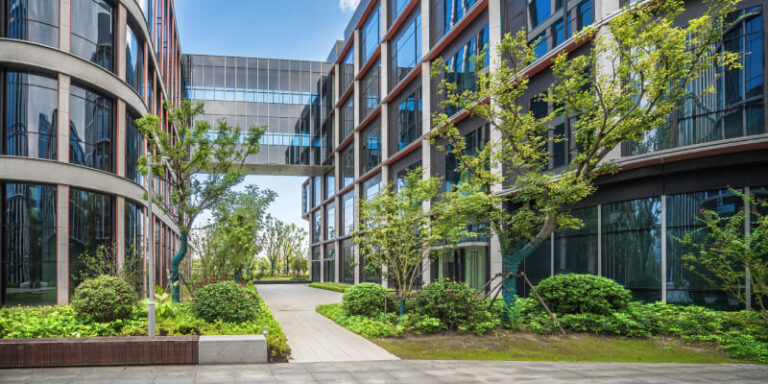An eco-friendly commercial property isn’t just great for the planet, but it’s great for business, too! So, if you’re looking to improve the sustainability of your property, you’re in the right place. At Neal Landscapes, we’ve been helping businesses in Milton Keynes and surrounding areas meet their sustainability goals for years. Our team knows all the tricks to make your outdoor spaces not just beautiful but also kind to our planet.
In this article, we’ll walk you through everything you need to know about sustainable landscaping. We’ll cover the basics and give you our top tips and tricks to get started. By the end, you’ll have all of the information you need to transform your commercial space, with the help of our expert landscapers, of course!
The Complete Guide To Sustainable Landscaping
Sustainable landscaping is on the rise, and for good reason. More and more businesses are beginning to understand that going green isn’t just good for the planet but for their bank accounts too! Additionally, legislation has been introduced in recent years to improve the sustainability of spaces in the UK. The Environment Act 2021 mandates a 10% increase in biodiversity on new developments. The government is getting serious about making our spaces greener, and commercial properties need to keep up.
But don’t worry – sustainable landscaping doesn’t have to be complicated or expensive. In fact, it can actually save you money in the long run! Let’s dive into what it’s all about.
- What Is Sustainable Landscaping?
- Sustainable Design
- Improving Soil Quality
- Water Management
- Biodiversity
- Energy Efficiency
- Our Top Sustainable Landscaping Tips
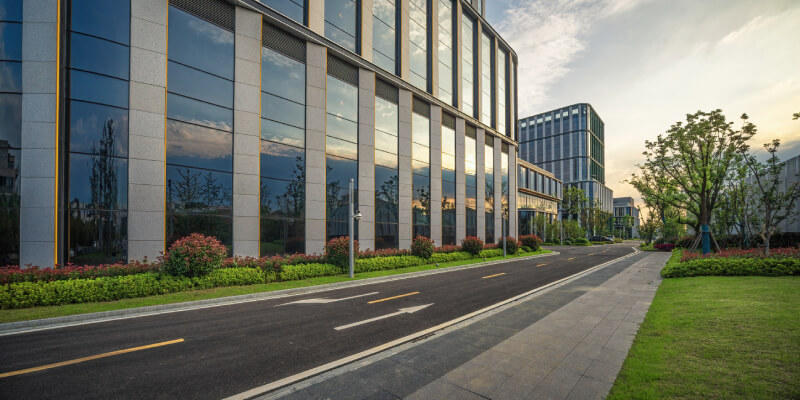
What Is Sustainable Landscaping?
Sustainable landscaping for commercial properties means creating and maintaining outdoor spaces that work with nature, not against it. It’s all about making smart choices that reduce environmental harm while still keeping your property looking top-notch.
Whenever we take on a new client for commercial landscaping in Milton Keynes or any of the surrounding areas, we encourage them to prioritise sustainability because it unlocks so many benefits, including the following:
- Lower maintenance costs: Sustainable landscaping methods like using plants that naturally thrive in your local climate means less watering, fewer chemicals, and less work!
- Reduced water bills: Smart irrigation and plant choices can slash your water usage dramatically.
- Improved property image: Customers and employees love green businesses! A sustainable landscape shows you care about more than just profits.
- Better resistance to pests and weather extremes: Working with nature builds resilience in your landscape.
- Compliance with regulations: Stay ahead of environmental regulations rather than playing catch-up.
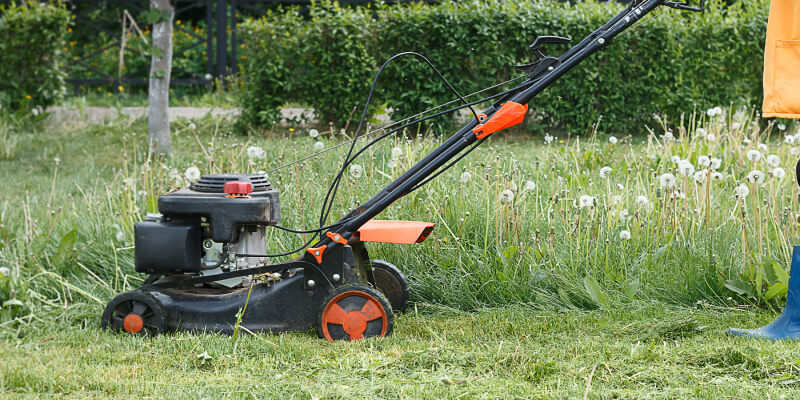
Sustainable Design
Creating a sustainable garden starts before a shovel is lifted or a seed is planted. A well-thought-out sustainable design minimises negative impacts on the environment and cuts costs – giving you the best of both worlds.
Here are some key principles of sustainable design:
- Native plant selection: Plants that grow naturally in your climate need less water, fewer fertilisers, and less maintenance overall. They’re already adapted to your weather and soil conditions, plus they provide food and habitat for local wildlife.
- Xeriscaping: This approach focuses on designing landscapes that reduce or eliminate the need for supplemental water. By grouping plants with similar water needs and using drought-tolerant species, you create attractive spaces that rarely need watering.
- Crop rotation: By routinely rotating your plants, you can prevent soil depletion and break pest cycles. For commercial display beds, changing what you plant each season helps keep soil healthy and reduces the need for chemical treatments.
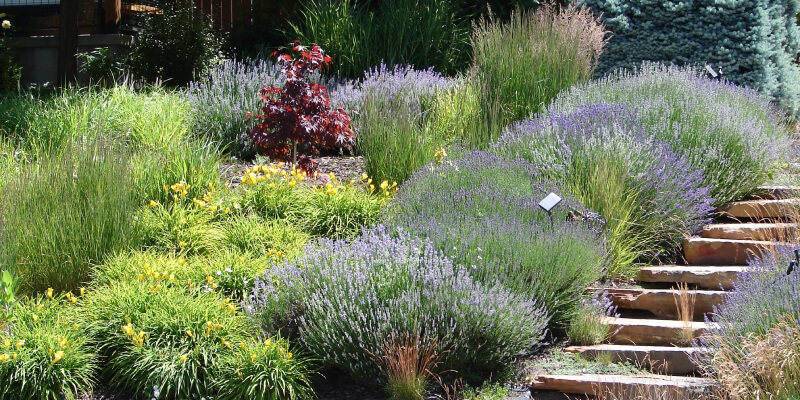
Improving Soil Quality
Healthy soil is the foundation of any sustainable green space. Good soil reduces reliance on chemical fertilisers, holds water better, and leads to stronger plants that resist pests naturally. Here are three simple ways to improve your soil quality:
- Composting: Turn landscape “waste” materials into garden gold! Grass clippings, fallen leaves, and pruned branches can all be composted and returned to the soil as valuable nutrients, diverting significant organic waste from landfills.
- Soil regeneration practices: Simple techniques like aeration and topdressing can dramatically improve soil health. These practices encourage beneficial soil organisms that create structure and nutrition naturally without chemicals.
- Natural fertilisers: Natural options like compost tea, seaweed extracts, and well-rotted manure feed plants slowly and build soil health. These alternatives provide more consistent growth and fewer pest problems than synthetic options.
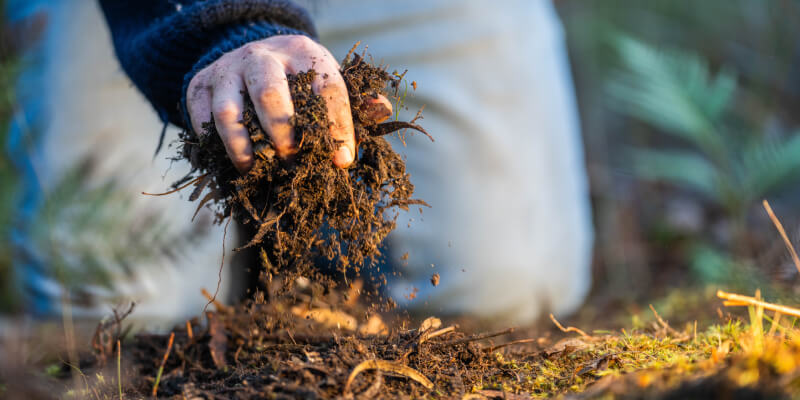
Water Management
Fresh water is a precious resource, and smart water management is key to sustainable landscaping. With UK weather patterns showing hotter, drier summers and wetter winters, adapting your landscape to use water wisely makes perfect sense.
Here are three ways to improve water efficiency:
- Rainwater harvesting system: Commercial buildings have large roof areas that are perfect for collecting rainwater. From simple water butts to sophisticated underground storage systems, harvesting rain provides free access to water during dry periods.
- Drip irrigation systems: These systems use significantly less water than sprinklers by delivering moisture directly to plant roots. Connected to timers or moisture sensors, they provide water only when and where it’s needed, reducing waste and improving plant health.
- Mulching for water retention: Adding a layer of organic mulch around plants keeps moisture in and weeds out. A 2-3cm layer of mulch can significantly reduce watering needs while slowly feeding the soil as it breaks down.
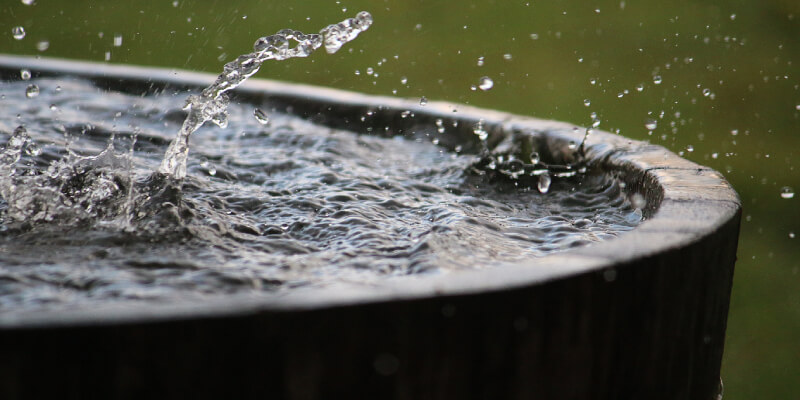
Biodiversity
A truly sustainable landscape doesn’t just minimise harm — it actively helps local ecosystems thrive! Encouraging biodiversity makes your landscape more resilient and creates a mini nature reserve on your commercial property.
Here are some simple ways to boost biodiversity:
- Companion planting: This involves planting different species together to benefit each other. Some plants repel pests that would damage their neighbours, while others attract beneficial insects or improve soil conditions.
- Biological control methods: Instead of using chemical pesticides, sustainable landscapes work with nature’s own pest control systems. Encouraging predatory insects, birds, and beneficial fungi can naturally keep pest populations in check.
- Beneficial insects: The vast majority of insect species are either beneficial or harmless! Creating a habitat for helpful bugs like ladybirds, lacewings, and ground beetles transforms your pest management approach and reduces the need for chemicals.
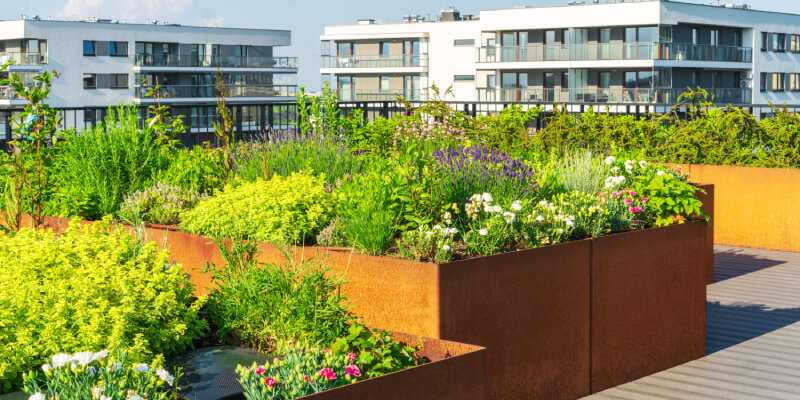
Energy Efficiency
It’s not just what you plant but how you maintain your landscape that affects its sustainability. Incorporating energy-efficient tools and features can dramatically reduce your carbon footprint.
If you are looking for landscape maintenance in Milton Keynes with sustainability in mind, here are some energy-smart approaches:
- Solar panel lights: The sun can power your outdoor lighting for free! Modern solar lights can reliably brighten paths and parking areas without expensive electrical infrastructure.
- Electric tools: Battery-powered alternatives to petrol equipment are now powerful enough for commercial use. They produce zero emissions during operation, cost less to run, and create much less noise pollution.
- Water recycling systems: Recycling systems can dramatically reduce water consumption. From simple rain gardens to more complex greywater systems, these approaches capture and reuse water rather than sending it to storm drains.

Our Top Sustainable Landscaping Tips
With all this info in mind, here are some of our top tips for creating a sustainable outdoor space on your commercial property:
1. Conserve Water
Start with the basics: water deeply but less frequently to encourage deep root growth. Water early in the morning to minimise evaporation losses. Consider installing a smart irrigation controller that adjusts watering based on weather conditions.
2. Plant Pollinator Friendly Plants
Bees, butterflies, and other pollinators are in trouble worldwide, but your landscape can help! Include flowering plants like lavender, echinacea, and heather that provide nectar and pollen throughout different seasons of the year.
3. Go Peat-Free
Peat bogs are incredibly important carbon sinks and wildlife habitats that take thousands of years to form. Using peat-free compost and soil for your landscape helps protect these valuable ecosystems while still providing excellent growing conditions.
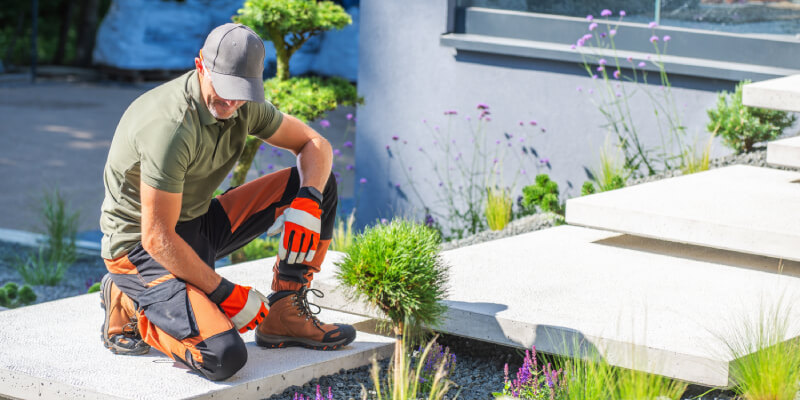
Go Green With Neal Landscapes
There you have it – your complete guide to sustainable landscaping for commercial properties! By implementing even a few of these ideas, you can make your outdoor spaces more environmentally friendly, cost-effective, and beautiful.
At Neal Landscapes, we specialise in creating and maintaining sustainable commercial landscapes throughout Milton Keynes and surrounding areas. From initial design through ongoing maintenance, our team brings the perfect blend of environmental knowledge and practical experience.
Ready to make your commercial property more sustainable? Get in touch with us today to discuss how we can help green up your space while keeping it professional and impressive. Your business, your budget, and our planet will all thank you!

